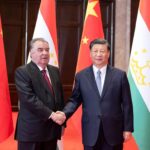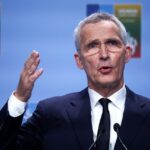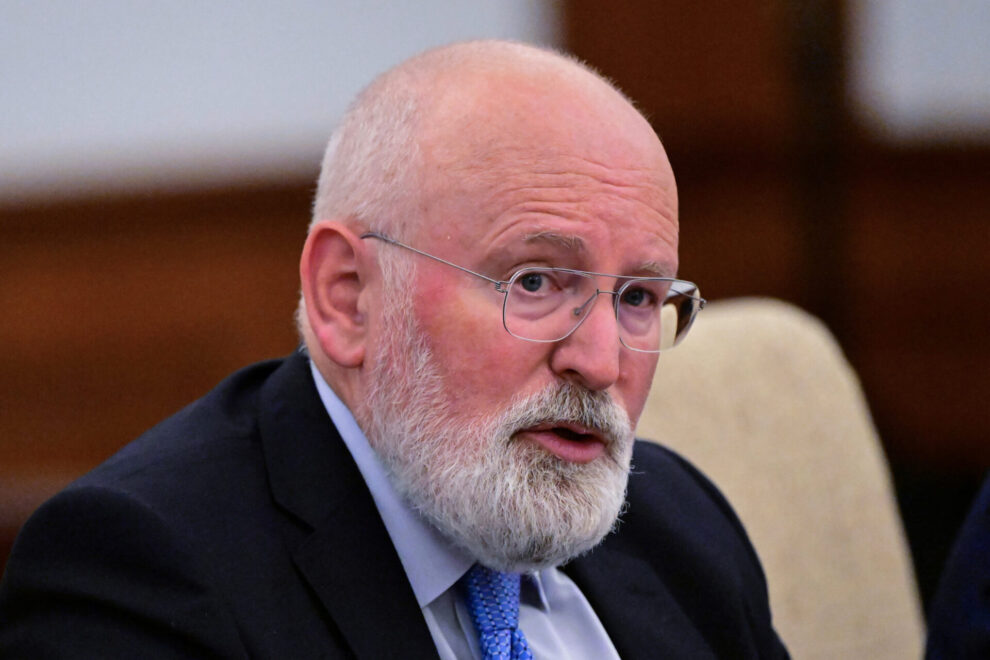The European Union’s rush toward climate neutrality has run into turbulence — and now the pilot is bailing out.
Frans Timmermans, the European Commission’s executive vice president in charge of the Green Deal, will resign from his post to head back to the Netherlands to lead a Labor-Green alliance in November’s national election. On Tuesday, the two parties confirmed him as their lead candidate for Dutch prime minister.
Having spent four years transforming how Europeans trade, travel, heat and eat, the bloc’s climate chief will quit rather than take a leave of absence, a Commission official told POLITICO.
His departure from Brussels comes at a crucial time for climate action both in the EU and abroad, as political resistance stiffens in the bloc and diplomatic talks gather pace.
POLITICO looks at five key questions that Timmermans leaves unanswered as he packs his bags for The Hague.
1. What’s next for the EU’s climate ambitions?
Ursula von der Leyen’s Commission has one major item on its Green Deal to-do list before the end of its term — drawing up an intermediate 2040 climate target.
The bloc’s expert council has already weighed in, calling for a 90 percent to 95 percent emissions cut. Yet with Timmermans’ going, the Commission loses the loudest voice in the room when it comes to pushing for ambitious action.
The EU currently has binding targets in place to reach climate neutrality by 2050 and to slash emissions at least 55 percent by 2030. Under the European Climate Law, a mid-way 2040 target should be presented in the first half of next year.
That means Brussels has until just before the European election in June 2024 to come up with a proposal. That’s awkward timing, to say the least: A backlash against more green regulations is shaping up to become a major election issue, reducing appetite for ambitious targets.
Asked repeatedly if the Commission intends to propose a 2040 target by June, a spokesperson offered neither clear confirmation nor denial, merely saying: “We point you to the European Climate Law, that is our legal basis.”
2. Who’s going to be the EU’s John Kerry?
The climate diplomacy calendar is packed ahead of this year’s U.N. COP28 summit in the United Arab Emirates. Someone will have to represent the EU at all the various run-up summits and meetings. Usually, that would be Timmermans.
Brussels will have to send someone else to Dubai to negotiate alongside U.S. envoy John Kerry and national delegation leaders from across the globe.
Timmermans has played a significant role at previous climate conferences, and is seen as having good relationships with major players like Kerry or Chinese envoy Xie Zhenhua.
Environment Commissioner Virginijus Sinkevičius, who attended last month’s G20 climate ministerial, doesn’t have the same experience.
The name of Diederik Samsom, Timmermans’ head of Cabinet, is also making the rounds in Brussels — though sending an EU bureaucrat without commissioner status to COP28 would likely be seen as a sign Brussels isn’t taking the summit seriously.
3. Who’s going to fight the farming lobby?
The EU’s efforts to make agriculture more sustainable is emerging as a major point of contention ahead of next year’s European election, with this summer’s parliamentary clash over the Nature Restoration Law giving a taste of what’s to come.
With the center-right European People’s Party (EPP) pitching itself as the representative of farmers and rural communities, a growing number of EU lawmakers have called for a break from green lawmaking.
Besides the Nature Restoration Law, a key pillar of the Green Deal, new laws to rein in pesticides use and improve soil health have also become entangled in the backlash.
Von der Leyen, an EPP member, has kept mum as conservative MEPs stepped up their campaign against environmental legislation affecting agriculture, leaving Timmermans to defend the latest slate of Green Deal proposals.
But after the summer break, when the EPP’s campaign is likely to restart, the Green Deal’s most vociferous champion will be preoccupied with his own battles in the Netherlands.
4. How will the EU suck carbon from the air?
There aren’t too many pieces of green legislation still in the pipeline, with most laws now being finalized between the Council and the Parliament. But there’s one key puzzle piece worth watching out for: The EU’s plan for “industrial carbon management,” or what role the capture, utilization and storage of CO2 should play in the bloc’s climate efforts.
Carbon capture is vital to help decarbonize heavy industry like steel or cement, which can’t easily switch to electric. Earlier this year, the Commission set an EU-wide target of reaching 50 million tons of annual CO2 storage capacity by 2030 as part of the Net-Zero Industry Act.
The strategy is expected this year, although it currently does not appear on the Commission’s official to-do list. Last month, a coalition of companies and NGOs urged Timmermans not to delay the plan, warning that “a comprehensive vision is still missing” regarding carbon capture.
The text will likely be the subject of intense lobbying given the controversy over what role carbon capture should play — with some arguing that it’s a distraction from efforts to reduce emissions.
5. Who will green the State of the Union?
In mid-September, von der Leyen will hold her State of the Union speech, which should indicate how much weight green issues will have during her final months in office.
But with Timmermans gone, it’s not clear who will push von der Leyen — whose own party wants her to take the foot off the gas when it comes to green legislation — to keep adding to the Green Deal.
Besides the carbon management strategy, other missing pieces include a long-delayed chemicals law and a forest observation framework — key to improving wildfire prevention efforts — as well as the above-mentioned 2040 target.
The Commission has so far offered no details on who might replace Timmermans.
Asked last week whether there was a plan in place, a spokesperson said: “The Commission always has a plan.”
Source: POLITICO








































